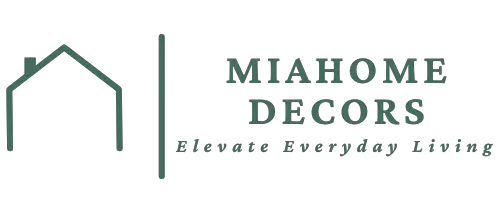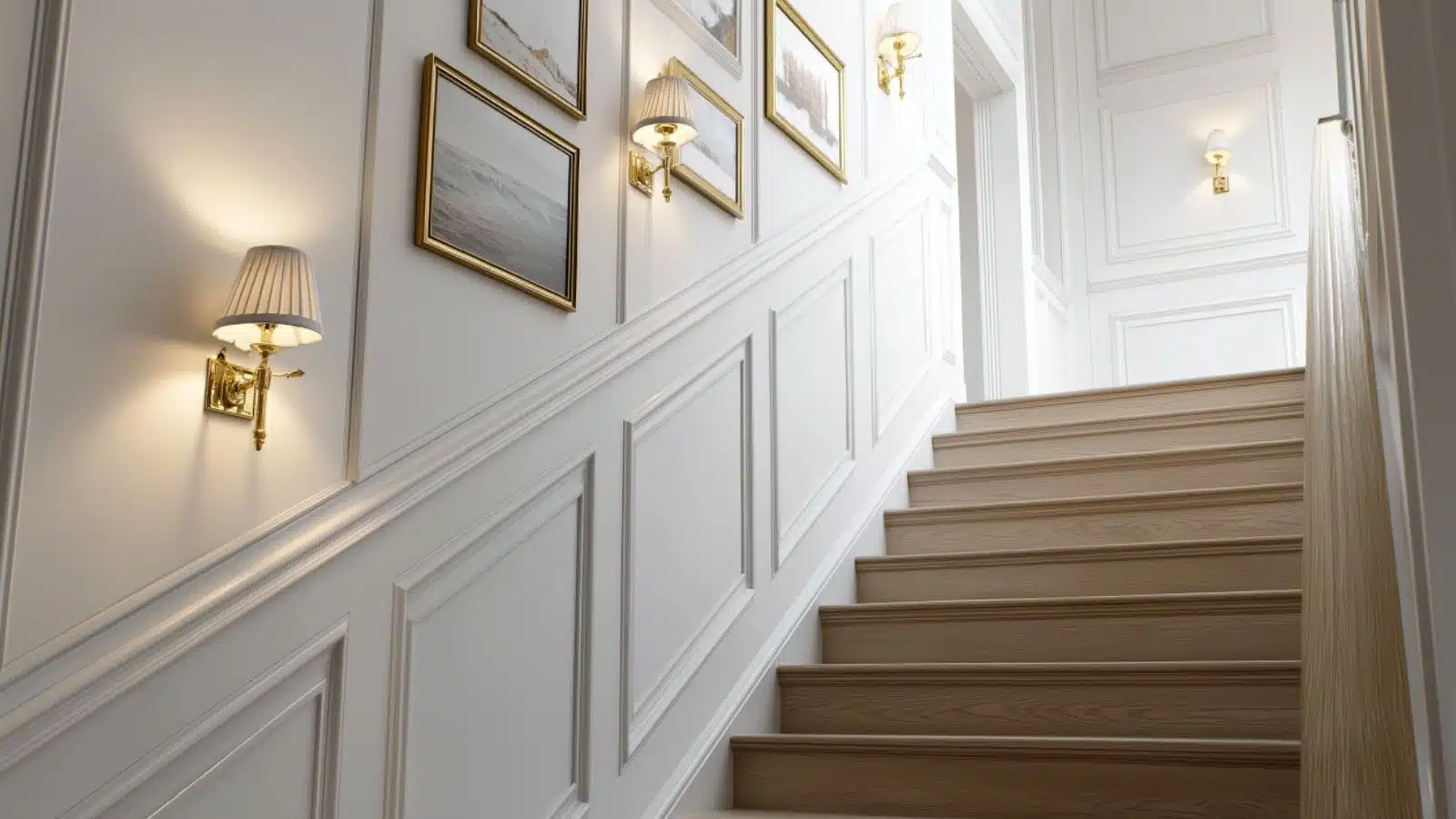Luxury Staircase Wall Design with Moulding Details: Timeless Elegance for Modern Homes
Table of Contents
In the world of interior design, staircases often act as a transitional element—but they’re also a missed opportunity for luxury and impact. A thoughtfully designed staircase wall, adorned with architectural moulding, can turn a simple flight of stairs into a show-stopping design feature. According to a survey by Houzz, over 60% of homeowners regret not investing in stair design during renovation. That tells us something crucial: luxury truly is in the details.
Whether your home leans traditional, transitional, or modern classic, luxury staircase wall design with moulding details creates a visual rhythm that’s hard to ignore. Mouldings offer depth, symmetry, and timeless sophistication. They play with light and shadow, draw the eye upward, and make even the narrowest stairwells feel intentional and grand.
In this article, we’ll explore how moulding can elevate your staircase wall, from selecting the right profiles to designing balanced layouts, coordinating colors, and finishing with décor. Whether you’re starting from scratch or looking to refresh an outdated stairway, this guide will give you the design insight and technical tips you need to create a staircase that’s not just passed through—but admired.
Understanding the Role of Moulding in Luxury Staircase Design
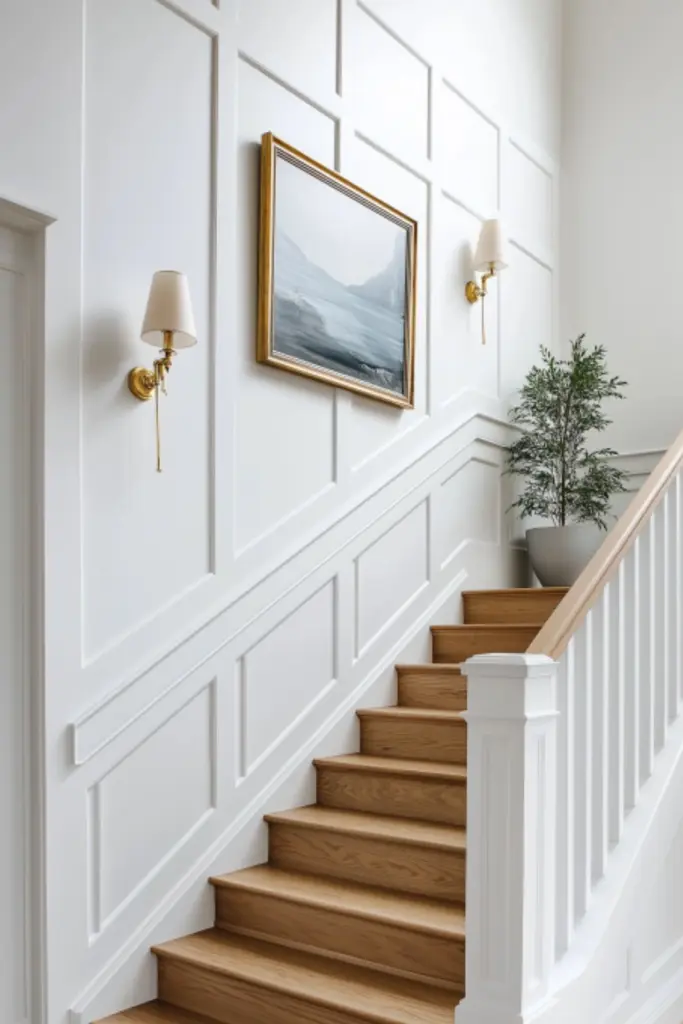
Moulding is more than just decorative trim—it’s a form of architectural storytelling. From classic wainscoting to ornate panel moulding, it adds dimension and elegance, turning blank walls into artistic statements. On a staircase wall, where space angles and height vary, moulding plays a critical role in guiding the eye and creating cohesion.
The function of moulding on a stair wall isn’t just aesthetic. It also helps delineate space and unify architectural themes throughout your home. Whether continuing chair rail moulding from a hallway or creating a framed gallery along the staircase, the design feels purposeful and refined.
Luxury wall moulding often includes multiple layers: baseboards, panel moulding, picture frame moulding, and even crown accents near landings. The scale and complexity should be tailored to your stair height, wall dimensions, and desired level of formality.
Table: Types of Moulding for Staircase Walls
| Moulding Type | Description | Luxury Impact |
|---|---|---|
| Chair Rail | Horizontal moulding about 36″ from floor | Frames lower wall and adds balance |
| Picture Frame | Square/rectangle frames spaced evenly | Adds symmetry and classic elegance |
| Panel Moulding | Raised trim outlining wall panels | Creates depth and formality |
| Wainscoting | Full lower wall treatment with moulding | Rich texture and architectural weight |
| Crown Moulding | Installed at ceiling or landing transitions | Enhances vertical lines and grandeur |
Designing the Perfect Moulding Layout for Stair Walls
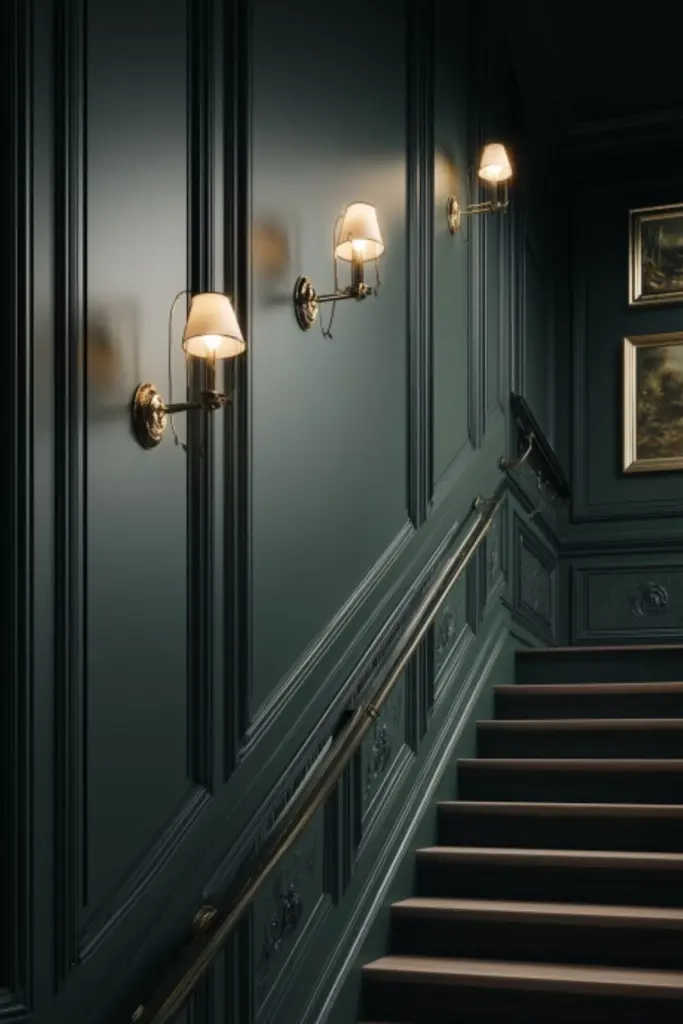
Designing a moulding layout for a stair wall requires attention to proportion, spacing, and flow. Unlike flat hallway walls, staircases introduce diagonal sightlines and height variation, which can be both a challenge and a creative opportunity.
Start by assessing the shape of your staircase wall. Is it open, closed, or partially visible from another space? Next, determine where your eye naturally travels when climbing or descending the stairs. This visual path should guide the placement of moulding panels.
One of the most popular designs for stair walls is ascending picture frame moulding that mirrors the angle of the handrail. Panels are typically rectangular and staggered to follow the incline. They can be tall and narrow or short and wide, depending on the wall’s dimensions. Balanced spacing is key—consistent gaps between mouldings create rhythm and harmony.
For a more minimalist look, a single horizontal moulding like a chair rail can be installed to anchor the wall visually, perhaps with contrasting paint or wallpaper below. In larger homes or double-height foyers, a full paneled wall stretching from floor to ceiling provides an opulent, gallery-style effect.
Visual Guide: Moulding Layout Options
| Layout Style | Best For | Design Effect |
|---|---|---|
| Angled Picture Frames | Traditional stair walls with railing | Classic and elegant |
| Stacked Squares | Modern homes with wide stair walls | Structured and contemporary |
| Chair Rail + Color | Compact or transitional staircases | Clean and visually grounding |
| Full Wall Paneling | Grand staircases or entry foyers | Dramatic and high-end |
Choosing the Right Paint and Finish for Moulding Accents
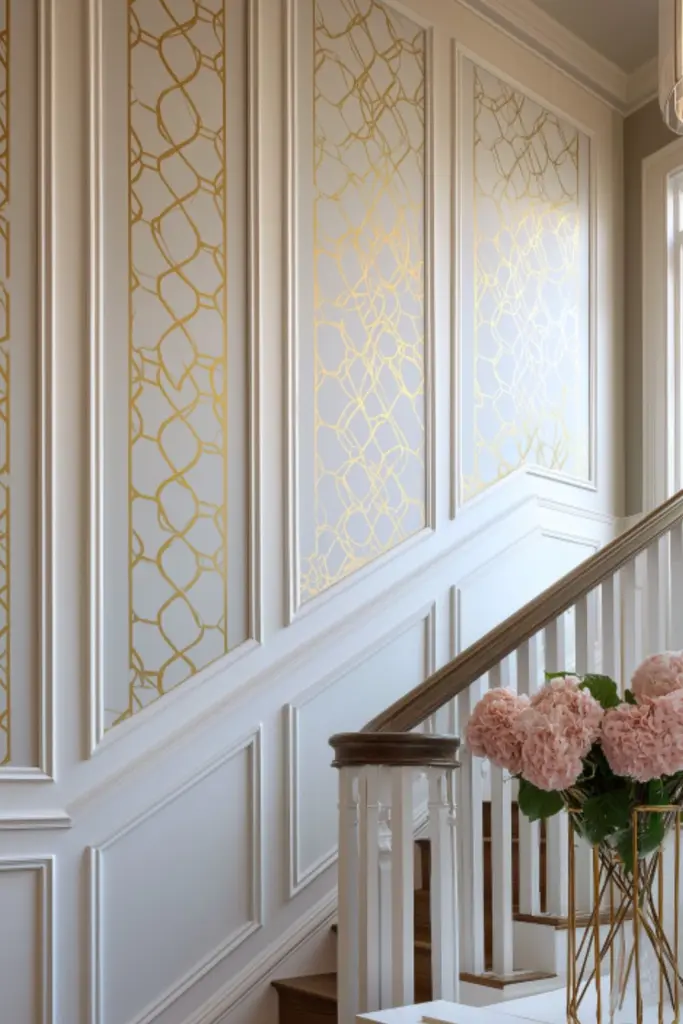
Moulding isn’t just about shape—color and finish matter just as much. In luxury staircase wall design, paint enhances depth, adds sophistication, and defines the relationship between moulding and wall space.
White remains the classic choice, especially in traditional interiors. Crisp, satin-finish white moulding against a contrasting wall color instantly creates a luxury feel. However, bold and moody designs are growing in popularity. Think charcoal panel moulding on charcoal walls, or deep navy accents paired with brass lighting.
Finish also plays a crucial role. Satin or semi-gloss finishes are ideal for moulding, as they reflect just enough light to highlight details without looking overly glossy. Matte finishes work well on walls behind moulding to create visual contrast.
Don’t overlook continuity. If your baseboards, door casings, or crown moulding already have a specific color or finish, match or coordinate them to maintain a consistent aesthetic throughout the home.
Color & Finish Comparison Table
| Paint Element | Recommendation | Why It Works |
|---|---|---|
| Moulding Color | Pure White or Coordinated Neutral | Classic, clean luxury look |
| Wall Color | Soft Gray, Navy, Taupe, Deep Green | Adds contrast and mood |
| Moulding Finish | Satin or Semi-Gloss | Enhances detail and is easy to clean |
| Wall Finish | Matte or Eggshell | Creates subtle texture and depth |
Mixing Moulding with Wallpaper or Textured Wall Treatments
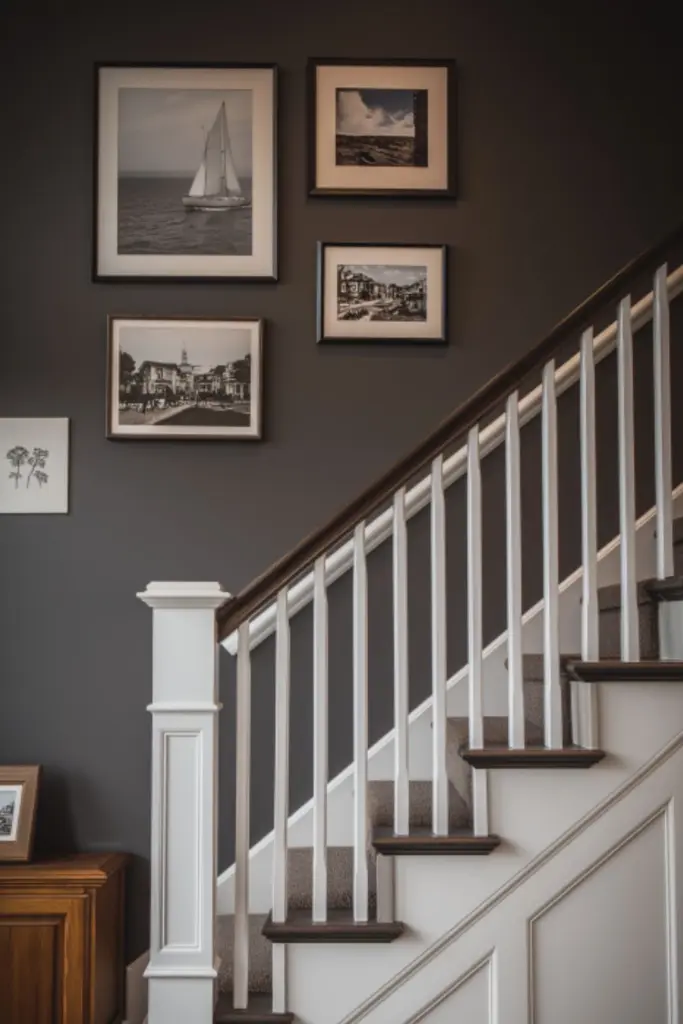
While paint is a staple in moulding design, integrating wallpaper or textured finishes within moulding frames can add an extra layer of elegance and visual interest. This approach works beautifully in staircases where you want to highlight vertical height and draw the eye upward with sophisticated contrast.
Wallpaper within picture frame moulding is one of the most timeless techniques. You can choose a subtle grasscloth, a damask print, or even a bold geometric pattern. These designs become framed art within your architecture, elevating the staircase without the need for additional artwork.
Textured wall treatments like Venetian plaster, limewash, or fabric panels can be used within moulded sections for a truly high-end aesthetic. These tactile finishes interact with light beautifully and bring depth that flat paint simply can’t match.
Balance is important—too many patterns can overwhelm. Use wallpaper in just a few frames, or only on one side of the stair wall to keep it curated. Consider light fixtures or mirrors placed strategically within the moulding layout to reflect texture and pattern throughout the space.
Mixing Materials Inspiration Table
| Material Used Inside Moulding | Best Pairing Moulding Style | Visual Effect |
|---|---|---|
| Grasscloth Wallpaper | Classic Picture Frame | Organic elegance |
| Damask or Floral Wallpaper | Ornate Panel Moulding | Traditional opulence |
| Subtle Geometric Print | Square Grid Moulding | Modern classic |
| Limewash or Venetian Plaster | Full Wall Panel Layout | European luxury and texture |
Styling Around Your Luxury Staircase Wall
Once the moulding is complete, the surrounding decor and lighting will elevate the overall look. Accessories should complement the architectural lines without cluttering them. Keep the focus on balance, scale, and material coordination.
Wall sconces placed within moulding frames add both function and ambiance. Choose finishes that align with your color scheme—brushed gold, matte black, or polished nickel are all refined choices. For longer staircases, a matching pair of sconces creates rhythm and symmetry.
If space allows, consider hanging mirrors or artwork within larger moulding frames. Abstract art works well in modern homes, while vintage-style prints enhance a traditional setting. Just be sure to leave enough negative space so that the moulding still feels prominent.
At the base or landing of the staircase, style a console table or antique bench. Add texture with a woven runner, tall vase, or stack of books that echo the tones found in your wall treatment. These elements ground the space and ensure it feels curated, not just decorative.
Staircase Styling Breakdown
| Feature | Styling Suggestion | Design Purpose |
|---|---|---|
| Lighting | Wall sconces inside or between mouldings | Highlights form, adds ambiance |
| Artwork/Mirrors | Within large moulding panels | Creates focal points |
| Console/Bench | At stair base with coordinated decor | Anchors the design |
| Runner Rug | Natural or luxe texture | Adds warmth and vertical flow |
Custom vs. Prefabricated Moulding – What’s Right for You?
When it comes to installing moulding on a staircase wall, one of the first decisions is whether to go custom or use prefabricated moulding kits. Each has its own advantages, and the right choice depends on your budget, skill level, and design ambition.
Custom Moulding offers unmatched flexibility. You can create any size, shape, or layout that perfectly fits your wall and style. This route is ideal for homes with curved staircases, angled walls, or unique architectural features. It’s also the best option if you’re aiming for a true luxury finish, as high-quality materials and expert craftsmanship are key to precision.
On the other hand, prefabricated moulding kits or panels are budget-friendly and much easier to install, especially for DIYers. These come in standard sizes and can be painted or trimmed to suit your needs. While they may lack the fine detail of custom work, when paired with elegant paint or wallpaper, the effect can still be stunning.
Whichever route you take, the most important factor is proportion. Oversized moulding on a small wall can feel heavy, while moulding that’s too delicate on a tall wall may get lost. Work with a scale drawing or tape outlines directly onto the wall to test dimensions before cutting.
Custom vs. Prefab Moulding Table
| Feature | Custom Moulding | Prefab Moulding Kits |
|---|---|---|
| Design Flexibility | Fully customizable | Limited to preset sizes and styles |
| Skill Level Required | Professional installation recommended | Beginner-friendly, great for DIY |
| Cost | Higher, but luxury-level finish | Budget-friendly with good visual return |
| Time Commitment | Longer due to design + build | Quick install, especially in straight runs |
| Ideal For | High-end renovations, unique walls | Quick refreshes, flat or simple layouts |
Conclusion
Luxury staircase wall design with moulding details is one of those home upgrades that speaks volumes—without saying a word. It communicates thoughtfulness, craftsmanship, and a deep appreciation for architectural beauty. Whether you go for minimalist frames or intricate full-wall panels, the result is always a staircase that feels tailored, refined, and truly timeless.
By understanding the roles of layout, color, material, and styling, you can craft a space that not only enhances your home’s interior but also becomes a source of daily inspiration. After all, luxury isn’t always about scale—it’s about design done with intention.
